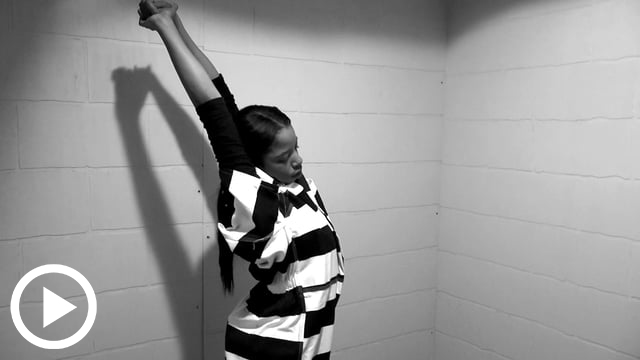As a young African-American, it is not anomalous to hear your professor or guest speaker tell you that more likely than not, you are going to end up imprisoned and disenfranchised at some point in your life — if not for the rest of your life. This is a future I would not wish upon anyone.
Unfortunately, the educators are not misinformed. And of those persons imprisoned, between 80,000 and 100,000 U.S. inmates were placed in some form of solitary confinement in 2014.
Georgia State University Associate Professor of Political Science Toby Bolsen, Ph.D., led some students in constructing a replica of a cell from the Richard Ross Studio in Santa Barbara, California. I volunteered as tribute to stay in it for a 24-hour solitary confinement observational study. At 8 p.m., on Tuesday, April 12, I was confined within the four plywood walls fashioned into an 8 by 8 hotbox.
After just 24 hours, I testify that solitary confinement is hell on earth. Solitary confinement is legalized torture. Solitary confinement is mental rape.
When I arrived at the replicated segregation unit in GSU’s Arts & Humanities building, I was under the impression that 24 hours would pass with ease. I vowed that my mental stability would be enough to preserve my well-being throughout. To my surprise, as I entered the cell, I immediately felt the psychological impact of feeling so big and monstrous in such a small confined space. The concentration of the light and the cyclic repetition of blocks constructing the walls hurtled me into a most sensitive level of vulnerability. From my sense of sound to my grumbling hunger, everything was intensified.
I believe that solitary housing units are designed to drive people insane. While confined, it felt as though I had no control of my thoughts, and the thoughts I did have were either irrational or memories of negative situations. Just as people reference their happy place to find peace of mind, for me, solitary confinement worked in the same way — but opposite: The setting inflicted a hellish thought process and mindset.
[Related: Youth Workers Need to Be Alert to Juveniles Placed in Solitary]
From the first hour to the last, my emotions transitioned from anxiety to sorrow, depression, irritation, anger and confusion, and finally to rage — until the point I was unexpectedly able to fall asleep.
The anger originated from a multitude of places: I felt fiercely mad when fathoming the legality of solitary confinement. I felt confused when attempting to understand who holds the justice system accountable in obeying the law. I felt outraged toward this legalized torture, by definition cruel and unusual punishment that people irreversibly suffer across the country. I felt empathy when thinking about the inmates currently confined.
I wanted to scream, cry and shout at the top of my lungs. The number of laps I took around that cell felt as though I had walked the distance from Georgia to California. Frankly, after counting the blocks constructing my cell a hundred times, I wanted to bang on the walls until they fell down.
Once I was able to return home, eat a meal of my choice and shower, I was able to maintain my sanity. My disapproval of solitary confinement remains unchanged. I participated in this observational study to bring attention to the practice of solitary confinement.
I am sympathetic toward the inmates incarcerated across our country who are victimized by this practice, and I pray that in my own legal career I will be able to make a difference to keep the next human being who made a mistake, as we all have, from such torment.
Anyssa Williams is a full-time student at Georgia State University, graduating in December with a bachelor’s degree concentrated in law and society.
More related articles:
Solitary Reform Shows Power of Brain Science to Change Policy






























